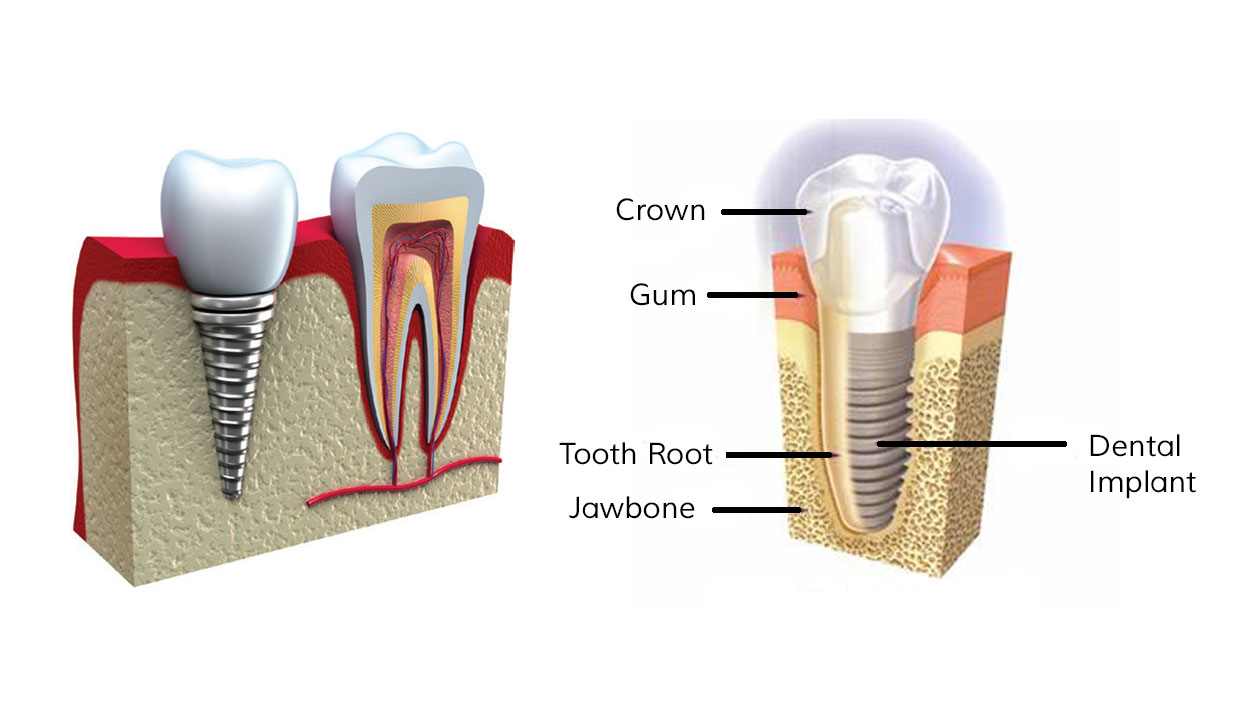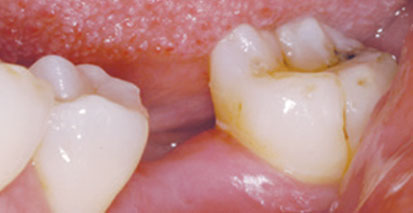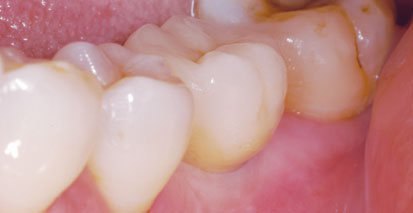Implants
Dental Implants

Primary Doctor
“It is great to be able to place dental implants in our dental office for our patients. I started doing implants because it’s nice to provide patients with a solution to missing teeth that is predictable, long lasting, and with a feel and look that mimics natural teeth. To provide this extra service to our patients in our own office is a real benefit. With my surgical experience, and additional training at both the WhiteCap Institute in Herber City, UT, along with training at the Zimmer Institute in Carlsbad, CA, I have acquired additional training, and learned new systems to more predictably, and cost effectively, place dental implants for the betterment of the patient.”
Before & After Photo
Compare Before & After
Implant Information
Dental implants are screw-shaped posts that are placed into the jawbone. Implants are able to restore missing teeth individually, be used to fill spaces with bridgework, and return a mouth back to its chewing and biting ability. They do not place unnecessary stress on adjacent teeth like other options, and are able to be cleaned and flossed like natural teeth. For those patients in dentures or partials, implants can help secure that denture or partial into place. Implants can finally provide the stability to instill confidence in the wearer that the denture or partial will stay in place during use.
Although bridges are commonly done, when doing so we involve adjacent teeth as the ‘supports’ for the missing tooth. In reality, we have turned a 1 tooth problem into a 3 tooth solution. An implant keeps a 1 tooth problem a 1 tooth solution. For those with dentures or partial dentures and many missing teeth, implants can finally provide the retention and confidence for the patient in knowing their denture or partial will not loosen or come out at the wrong time. How embarrassing to have a lower denture pop out of a mouth while eating with friends. Implants will retain the denture and save that dreaded embarrassment.
Almost all ages, although adolescents need to be done growing, and for some, that can be age 18 to 20. From there, there is no real age limit for the majority of cases, assuming the standard requirements for implant placement can be met which will be determined at the consultation appointment. This is based upon health status, quantity and quality of bone, functional habits, etc.

We first set up a consultation appointment in which we discuss the needs of the patient. I will then look at bone in the site for width and height and determine if a 2 dimensional or 3 dimensional image of the site is appropriate. Study models may be taken. During this appointment you will learn about the implant process, risk/benefit, and questions answered. The day of the surgery most will find pretty easy, just a series of steps to get the implant placed. From 2 to 4 months after the implant has been placed, the implant will be checked for healing and bone integration, may be uncovered if a healing cap is needed, and the sequence planned for final restoration.
After placement of the implant, during the initial healing time, most patients report only minor discomfort. It is not uncommon for patients to say that they feel less discomfort after implant placement then they did after a tooth extraction. Most will do just fine on over the counter pain medication, and rarely is it found to be discomfort that lasts any more than a few days time.
As with any procedure, there are always risks/benefits, costs/ alternatives. Every individual person brings an individual case to the table in regards to implant restorations. In those cases deemed appropriate for dental implant restoration, I feel the best cost vs benefit analysis is from one patient of mine who has stated on many occasions: ‘thanks to dental implants, I still have all my teeth’.


